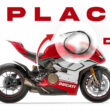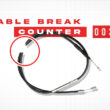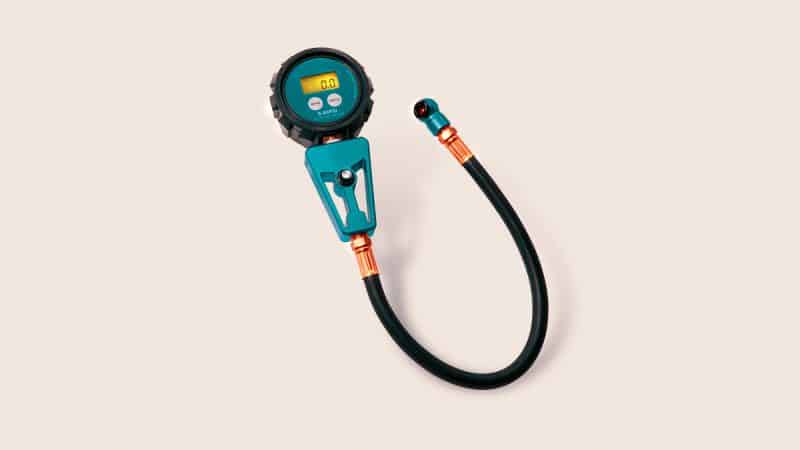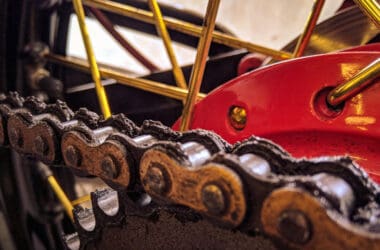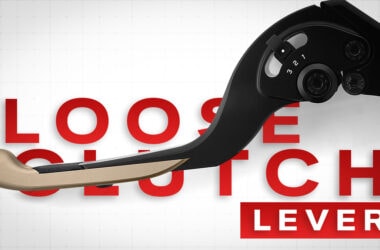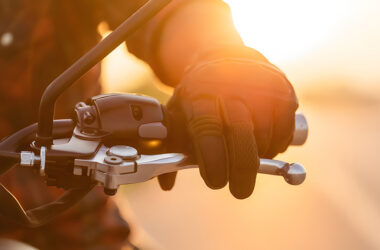Table of Contents Show
Maintaining tire pressure is one thing, but how often one should check motorcycle tire pressure is a crucial factor for deciding rider, passenger, and motorcycle safety.
Check motorcycle tire pressure once a week for regular riders. Temperature is directly proportional to the pressure as the tire pressure deflates slowly. Puncture tire deflates at a 5-10% rate in a week and a half. Follow proper tire inspection routine to ensure the safety of you and the passenger.
If you decide to go on a long trip or just a small commute, giving quick tire pressure is a must if you are not a regular rider.
Every person who uses a motorcycle should be able to know how often to check a motorcycle tire pressure and how to find accurate tire pressure for both tires. This also includes inspecting for any potential damage or wear to the tires and any signs of low or high tire pressure.
We recommend everyone to read a detailed article from www.nhtsa.gov ( National Highway Traffic Safety Administration ) To know more about motorcycle tire safety tips.
Today you will learn all of these skills, which are important for your riding experience and safety.
How Often To Check Motorcycle Tire Pressure
So as you know by now, you should check your motorcycle tire pressure once a week if you are a regular rider.
And if you take your motorcycle/bike out occasionally for a ride( once in 2 weeks ) then check the tire pressure every time you go out. Sometimes the small leak of air from the tire can cause big troubles.
In most cases, sharp objects like the nail, screw, thorn get in the tire and the tire won’t get punctured immediately as the air pressure inside the tire puts constant pressure on the tire’s rubber.
As the rubber is elastic in nature it expands and holds the sharp object inside the tire and the air leaks very slowly and gradually.
If the tire gets punctured, it will deflate at a 5-10% rate in a week and a half of time if you ride regularly.
Checking tire pressure as often as possible is a good practice that will keep you and the passenger safe if you are riding with one.
How To Check Your Motorcycle’s Tire Pressure
There is a valve stem on each motorcycle, they are covered with a valve stem cap. Now all you need to check tire pressure is a tire pressure gauge and follow these steps.
- Unscrew the valve stem cap and place the pressure gauge on top of the valve stem in such a way that there is no ( pisss ) noise coming from it.
- Once you have placed it properly, the pressure gauge shows the exact psi present in the tire.
- Put the valve stem cap back, that’s all folks. you have successfully inspected the tire pressure.
Any moment where the motorcycle/bike feels heavy or too light, tire pressure must be inspected.
Before checking tire pressure make sure that the tires are cold(it means you have to wait for an hour after a ride since the tire gets heated up and false readings are displayed).
And if you are in a hurry and want to fill the air in the tire even when the tire is hot, then add 5-6 psi ( 0.34-0.41 bars ) to the recommended value.
Here’s a formula for how the air/gas works in ideal tire pressure, known as ideal gas law.
Pv = nrt ( Ideal Gas Law )
Where,
P = Pressure
V = Volume
T = Temperature
N = Amount of substance
R = Ideal gas constant
These factors should be in proper balance because the temperature is directly proportional to the pressure.
So if the weather temperature is low, it will result in less pressure inside the tire.
That’s why the motorcycle has low pressure inside the tires during the winter season.
Check tire pressure as often as possible, especially if you are planning to go on a long trip. Following this habit will keep you safe from any wanted accidents.
How To Find Accurate Front & Rear Tire Pressure For Motorcycles
It is a simple process to find accurate motorcycle tire pressure. Every O.E.M. ( Original equipment manufacturer ) manufactures the tires according to the specifications of the motorcycle.
To find out the exact tire pressure refer to the user manual as the tire pressure is calculated by engineers considering the weight of the bike.
So every motorcycle manufacturer has mentioned the tire pressure of the front and rear tires. Some motorcycle manufacturers user manuals also mention the tire pressure with a single rider as well as with a passenger.
There are two places, where you can find accurate front and rear tire pressure.
- The user manual.
- Sticker on your swingarm or the motorcycle frame.
Never refer to the tire pressure on the sidewall of the tire as the number mentioned there is the maximum pressure the tire can withstand.
In other words, that is the maximum allowed tire pressure. And some tires are used as common for too many motorcycles/bikes, but the weight and dynamics of the motorcycle are different so never look at the side of the tire walls for finding out the tire pressure as you will end up making the tire hyperinflated. As that number is the maximum pressure that the tire can withstand.
Rough and unstable bumpy rides are the result due to the reduced contact area ( contact patch ) reduced between the road and tires, thus the traction also reduces, which compromises the rider’s safety.
How To Inspect For Any Wear Or Damage To Motorcycle Tires
Any small amount of wear on the tires is inevitable, but significant damage can cause some serious problems.
So regular inspection of the tire should never be avoided.
And the skill of inspecting tires for damage or wear should be learned by every person who uses a motorcycle.
Check The Threads Of The Tire
Thread design by the tire manufacturer is designed to ensure maximum stability and grip of the motorcycle.
If the threads go flat, then the motorcycle won’t respond and won’t handle as expected, which is very dangerous as your motorcycle may start skidding and drifting when you apply brake urgently and while cornering.
There is a (TWI) treadwear indicator, which is stamped on the edge of the tire, it should not be at the level of the surrounding thread.
If the TWI stamp is at the level of the surrounding threads, then the tire needs to be replaced.
Cracks On The Sidewalls Of The Tire
Most of the tires are composed of Natural rubbers. SBR, Butadiene rubber, Butyl, and halogenated butyl rubber, acetone, ash content, and hydrocarbon rubber.
The majority composition of the tire is rubber (more than 40 %). And rubber tends to wear out after a certain lifespan, the cracks on the tires start to get visible.
It is the time when you should change the tires as the cracked tires may be dangerous at high speeds and increase the self-discharge rate of the air inside the tires.
Check Out Stones & Gravels In Between The Tire Threads
If the stones and gravel are stuck in between the tire, remove them with any object which has a flat and rounded tip.
Avoiding cleaning and removing these stubborn dirt or stone particle will affect your motorcycle handling abilities on wet and slippery surfaces.
The contact between the tire and road will not be as intended and will be flat if the gravel particles are stuck between the tire threads.
The threads are designed in such a way that it escapes water, as water flows out from the tread design in the rainy season, having gravel will not allow the water to escape efficiently.
Signs To Look Out For Low Or High Tire Pressure
There are a handful of signs anyone can look out for to find out about low or high tire pressure.
Don’t avoid these signs because riding safety will always give you pain and doubt-free riding pleasure.

Signs to look out for low tire pressure
- If you feel your motorcycle is heavy all of a sudden, then it’s time to check your psi level and fill up the tire if it’s necessary.
- Your motorcycle is maintaining high rpm at a steady speed limit.
- Low fuel economy is the result since the traction is more when the tire pressure is low. The engine has to put up more power to overcome the friction, as the contact area is inversely proportional to performance and mileage is low.
- There is more wear on the edges of the tires, as they get in contact with the road which results in more friction. So the tire wear on the edges is common on underinflated tires.
- You feel the motorcycle get unusually heavy as you add more lean-angle while cornering.
Signs To Look Out For High Tire Pressure
- The ride is stiff – as the contact patch between the road and the tire is small, the suspension system does not work efficiently as a minute change in the road can cause a jerky response.
- The motorcycle skids or drifts when you brake hard.
- The motorcycle loses traction easily while cornering.
- Only the center of the tire is touching the ground as shown in the diagram above.
Conclusion
If you are planning a long trip, check the tire pressure for obvious safety purposes.
And the majority of the time you will be riding on a highway.
If you take your motorcycle out occasionally, check the tire pressure every time. You don’t want to be caught off-guard since you will be unfamiliar with the motorcycle compared to if were riding it every day.

